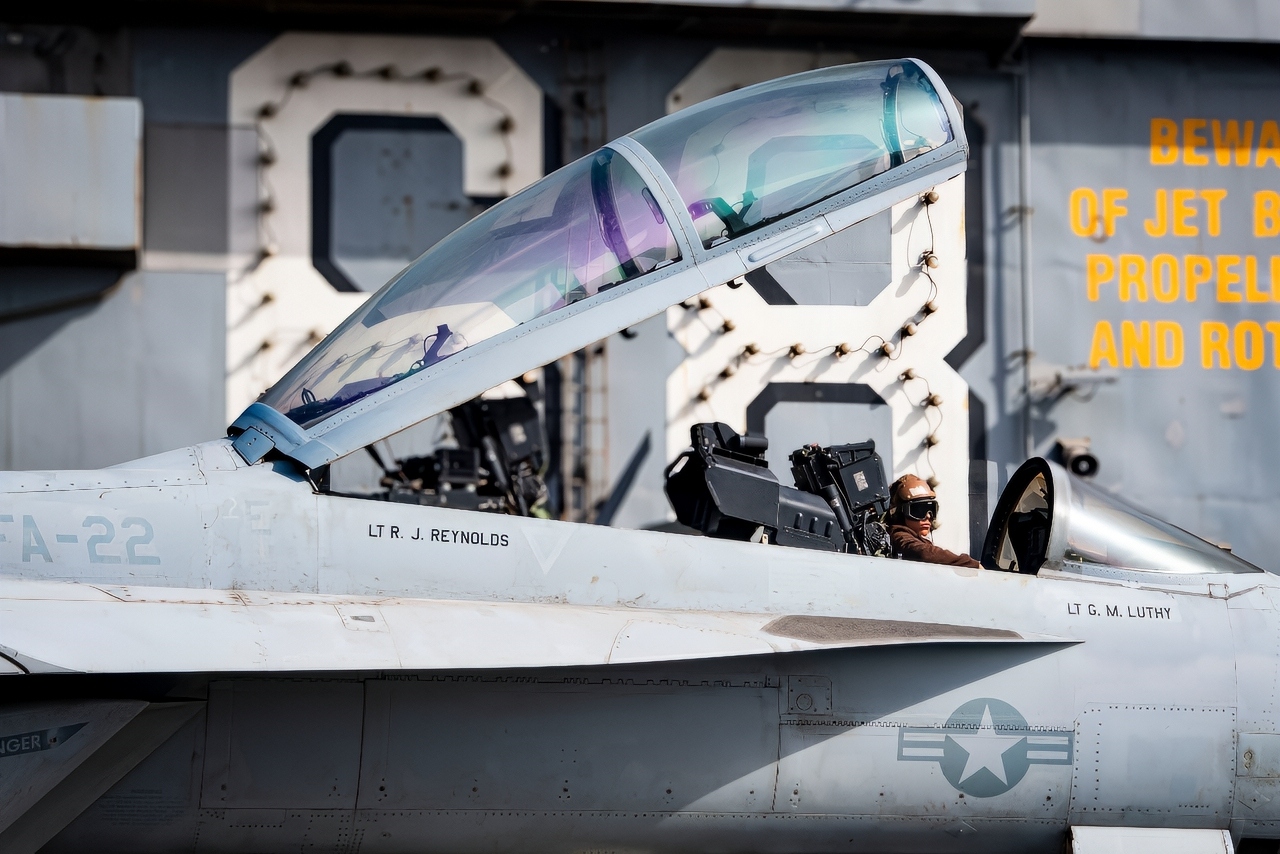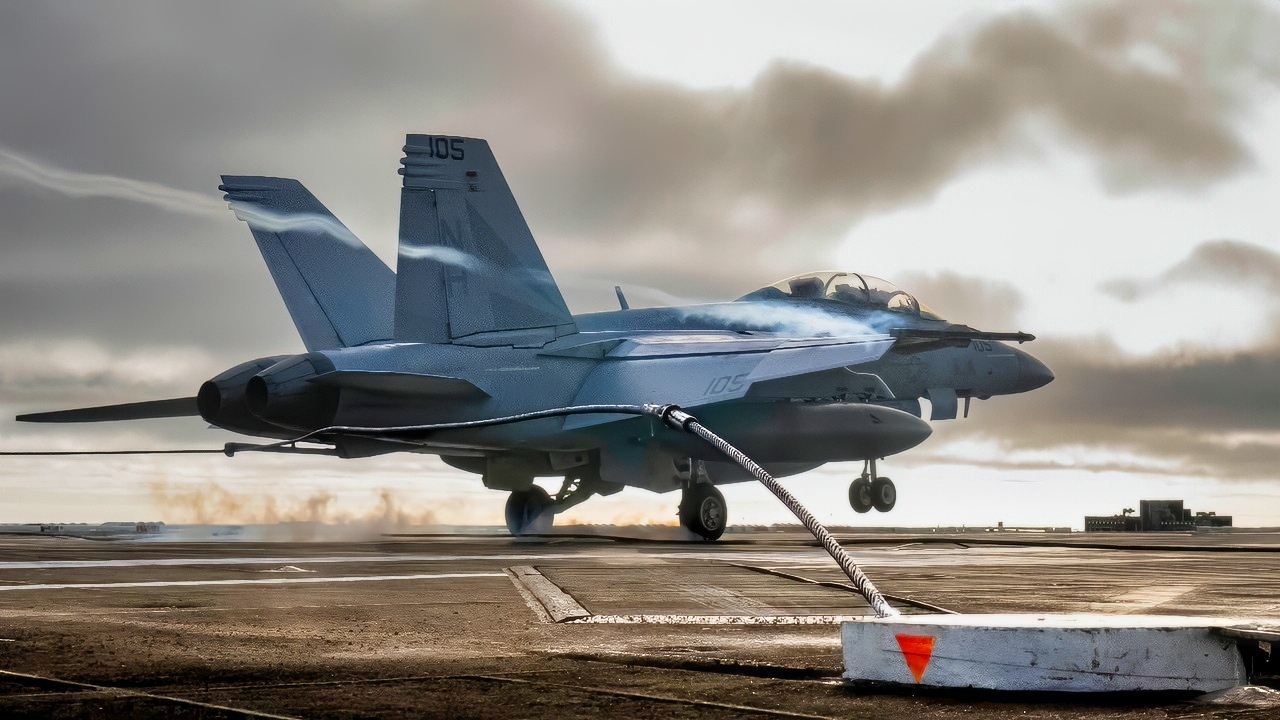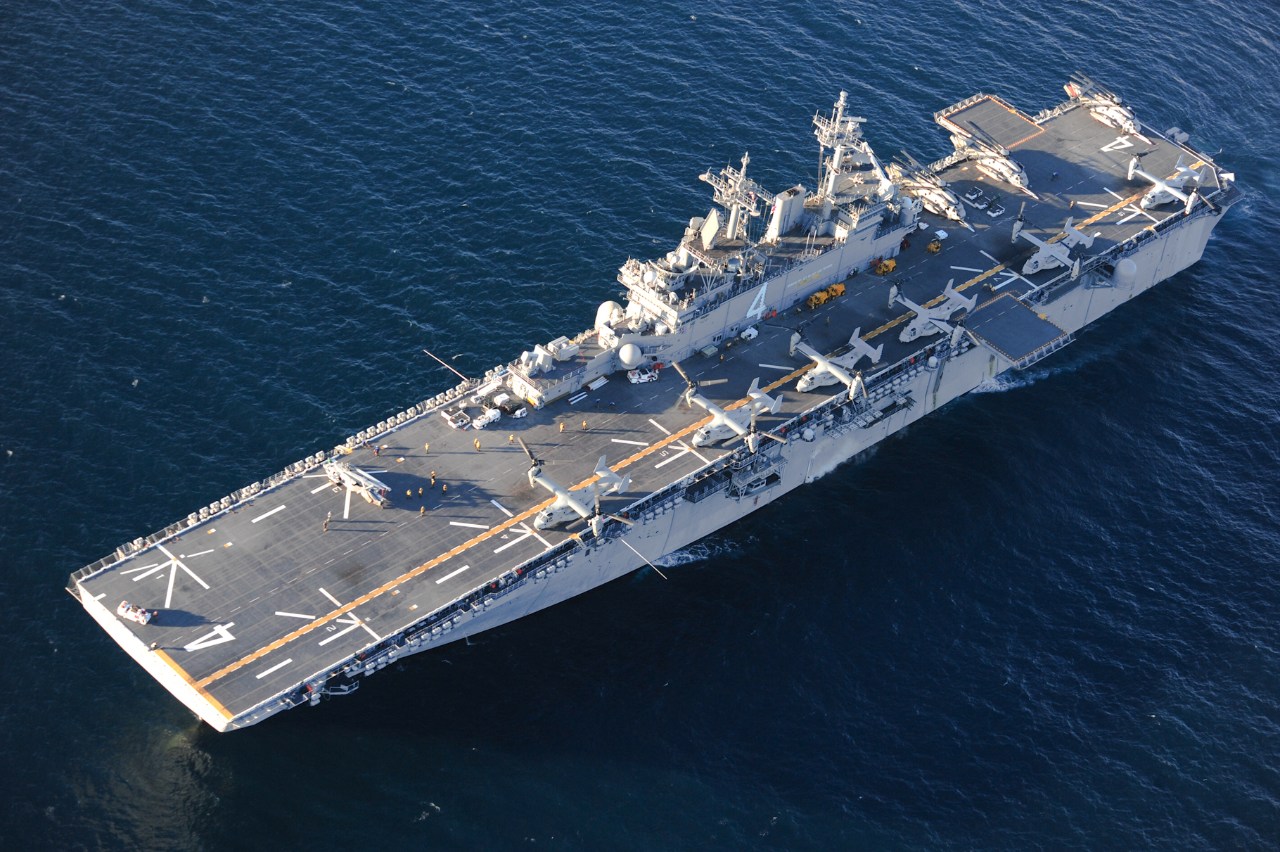Key Points and Summary – During the 1970s, the U.S. Navy studied a 50–60,000-ton CVV medium aircraft carrier to bolster aviation during Vietnam and the Cold War quickly.
-Promised benefits included faster, cheaper conventional construction using existing know-how; forming additional carrier groups for ASW, ISR, and flank protection; dispersing presence to undercovered regions; and bridging aging Midway-class ships to the Nimitz era without nuclear refuelings.
-Backed by Presidents Ford and Carter, the concept faltered as costs jumped from $550 million to $1.5 billion.
-With only 50 aircraft, two catapults, and two elevators—and requiring more escorts—the CVV’s value couldn’t match Nimitz-class endurance and capacity, so it died.
5 Reasons to Have a Medium-Sized Aircraft Carrier (CVV)
The U.S. Navy in the past came close to constructing a class of medium-sized aircraft carriers to supplement its fleet.
The option was considered during the Vietnam War – the Navy wanted to strengthen its regular force of carriers to increase the weight of aviation in the maritime battlespace.
The proposed CVV medium carrier would cost less and would be easier and quicker to produce at a time when the Navy needed all the ships and aviation assets it could get.
The CVVs would displace 50–60,000 tons, making them lighter and a shade faster than other carriers such as the Midway-class were at the time.
The Navy was ready to invest $550 million into the CVV program – but the cost soon ballooned to a gargantuan sum of $1.5 billion.
Despite the costs, there were several good reasons to go ahead and build the CVV.
The CVV Construction Could Have Been Quicker and More Efficient
First, the CVV would have been faster and more fuel-efficient than existing carriers. They were conventionally powered but easier to produce than Nimitz-class supercarriers.
This would give shipbuilders a shot in the arm and allow Congress to breathe easier after spending so much money on the Vietnam War.
The Shipbuilding Know-how and Expertise Already Existed
Second, shipbuilders would not have needed to reinvent the wheel when it came to designing and building the propulsion system.
The Navy would have had a way to build more carriers while waiting for the Nimitz-class to be fully mature.
The Cold War was going to require a naval build-up to face down the Soviets in Europe. The CVV could have been more interoperable with NATO allies, who also needed an aviation boost against the Russians.
Protecting the Fleet With More Combat Power
Further, additional carrier battle groups could have taken shape around the CVV medium-sized carriers.
The CVV could have been an escort carrier similar to the Casablanca-class in World War Two. It could have protected the flanks of surface ship flotillas. Its anti-submarine aircraft would have defended effectively against enemy submarines.
The CVV could have performed intelligence, surveillance, and reconnaissance duties, too.
More Aircraft Carriers to Span the Globe
The CVV would also have allowed for a more dispersed and decentralized Navy. Exclusive focus on theaters such as the Pacific and Atlantic left much of the globe unattended in the 1970s.
A CVV could have patrolled the Indian Ocean, the Arctic, Oceania, and the Western Hemisphere.
More global coverage would have stimulated innovative thinking about how to transform strategic doctrine for the Navy.
CVV Replacing the Older Midway-Class
Finally, the Midway-class carriers were aging, and the Navy needed a carrier that could bridge the service to the Nimitz-class.
This made logistical sense. The CVV, being conventionally powered, would need less maintenance and would not require a mid-life nuclear refueling period that would take it out of action for long periods.
The CVV had presidential support. President Gerald Ford was on board, and President Jimmy Carter followed. Naval planners saw the CVV as an asset to strengthen maritime aviation. It would have given the Navy more operational diversity, allowing it to support a two- or even three-front war.
Battle planners did not know how long Vietnam would last. There were issues in North Korea that forced the Navy to consider contingencies. The Soviet Union and the Warsaw Pact were a steady threat, and terrorism was ramping up in the Middle East. The U.S. military was stretched too thin. Being able to project power with a quicker and lighter medium carrier made strategic sense.
Ultimately the CVV was not pursued. Cost was a factor. But additionally, it could only carry about 50 aircraft with just two steam catapults and two elevators. The Nimitz-class, thanks to its nuclear-powered propulsion, could stay out to sea longer, and it could also deploy more aircraft.

U.S. CENTRAL COMMAND AREA OF RESPONSIBILITY (July 22, 2025) An F/A-18F Super Hornet, attached to Strike Fighter Squadron (VFA) 22, taxis across the flight deck of the Nimitz-class aircraft carrier USS Nimitz (CVN 68) in the U.S. Central Command area of responsibility. (Official U.S. Navy photo)

A U.S. Navy F/A-18F Super Hornet, assigned to the “Black Knights” of Strike Fighter Squadron (VFA) 154, lands on the flight deck of Nimitz-class aircraft carrier USS Theodore Roosevelt (CVN 71), July 24, 2025. Theodore Roosevelt, flagship of Carrier Strike Group (CSG) 9, is underway conducting exercises to bolster strike group readiness and capability in the U.S. 3rd Fleet area of operations. (U.S. Navy photo by Mass Communication Specialist 3rd Class Aaron Haro Gonzalez)
The CVV concept was sound on paper. The Navy did not predict cost overruns, but it was important for aviation leaders to have more options, with the war in Vietnam raging amid a steady demand for attention from other regions.
But the CVV would have required more surface vessels as escorts, further adding to costs.
We’ll never know what the CVV might have accomplished. But the carriers would have been valuable assets allowing for a diverse range of geographical deployments. I liked the idea of having more carriers in the water to better project power and deter enemies in the 1970s.
U.S. power seemed to be fading at the time, with a force that was stretched too thin. The CVV could have renewed its maritime power projection capabilities – but it was not to be.
About the Author: Brent M. Eastwood
Brent M. Eastwood, PhD is the author of Don’t Turn Your Back On the World: a Conservative Foreign Policy and Humans, Machines, and Data: Future Trends in Warfare plus two other books. Brent was the founder and CEO of a tech firm that predicted world events using artificial intelligence. He served as a legislative fellow for US Senator Tim Scott and advised the senator on defense and foreign policy issues. He has taught at American University, George Washington University, and George Mason University. Brent is a former US Army Infantry officer. He can be followed on X @BMEastwood.
More Military
The U.S. Navy’s Great Ford-Class Aircraft Carrier Reboot Has Arrived
The U.S. Navy’s Great Iowa-Class Battleship Reboot
Is the Ukraine War ‘Shapeshifting’ Into the Vietnam War?
China’s Great J-20 Mighty Dragon Stealth Fighter Reboot Has Arrived










